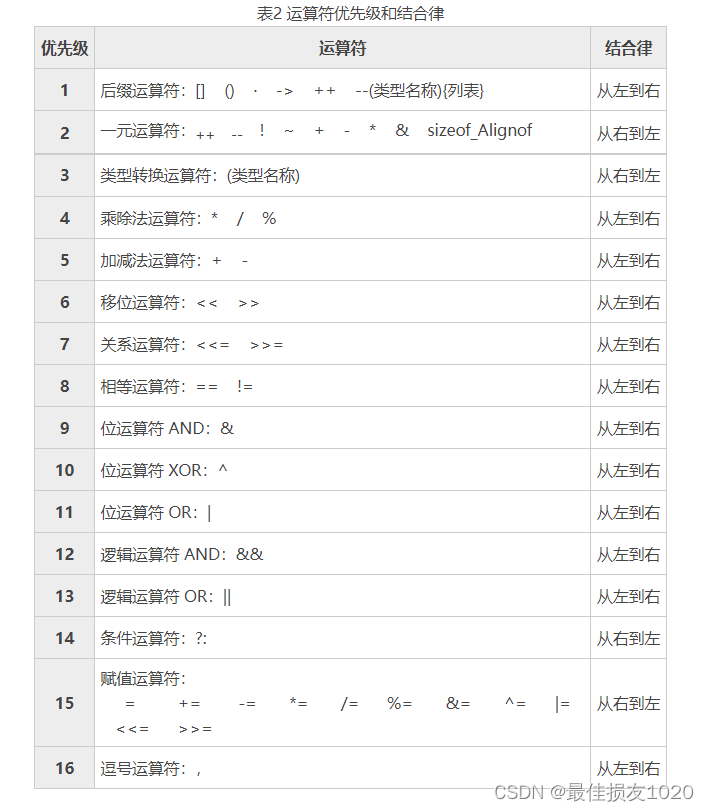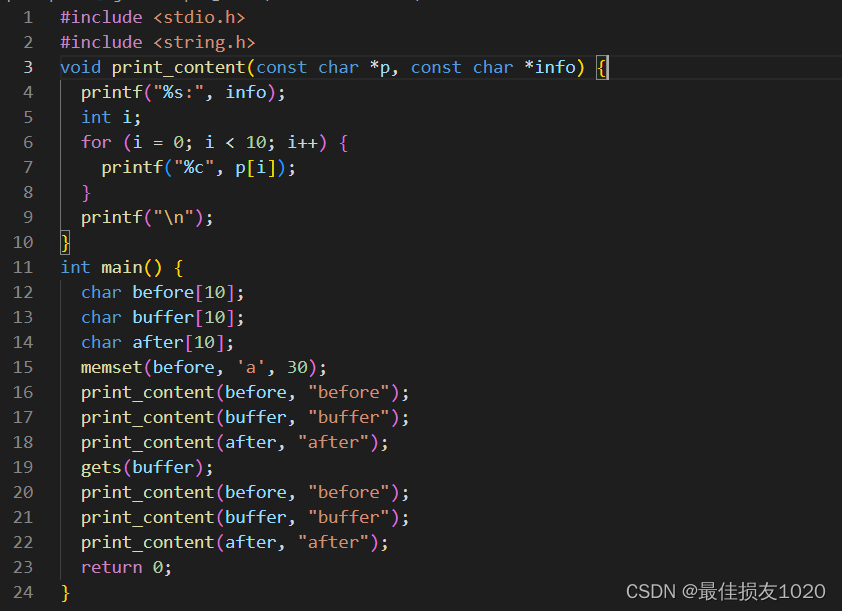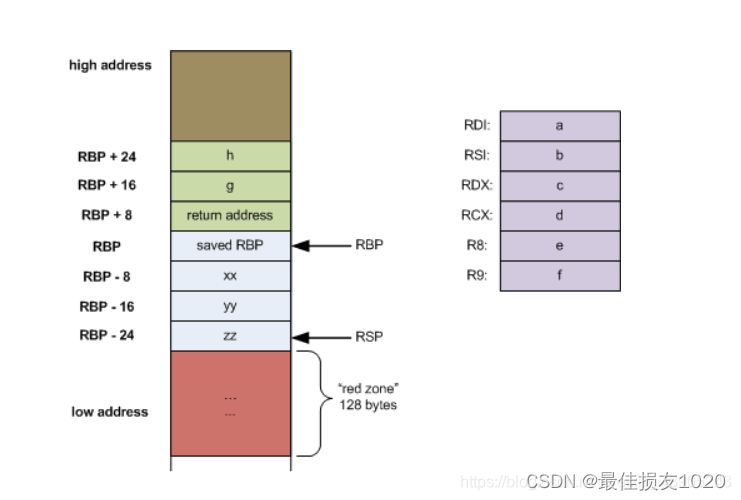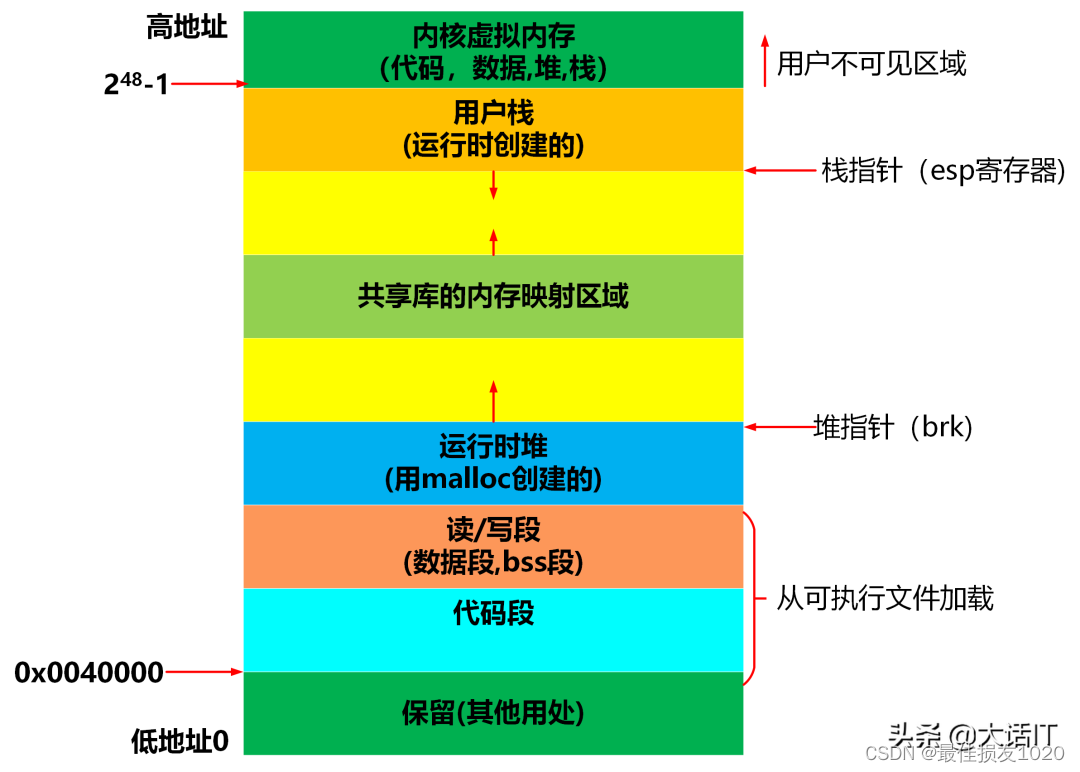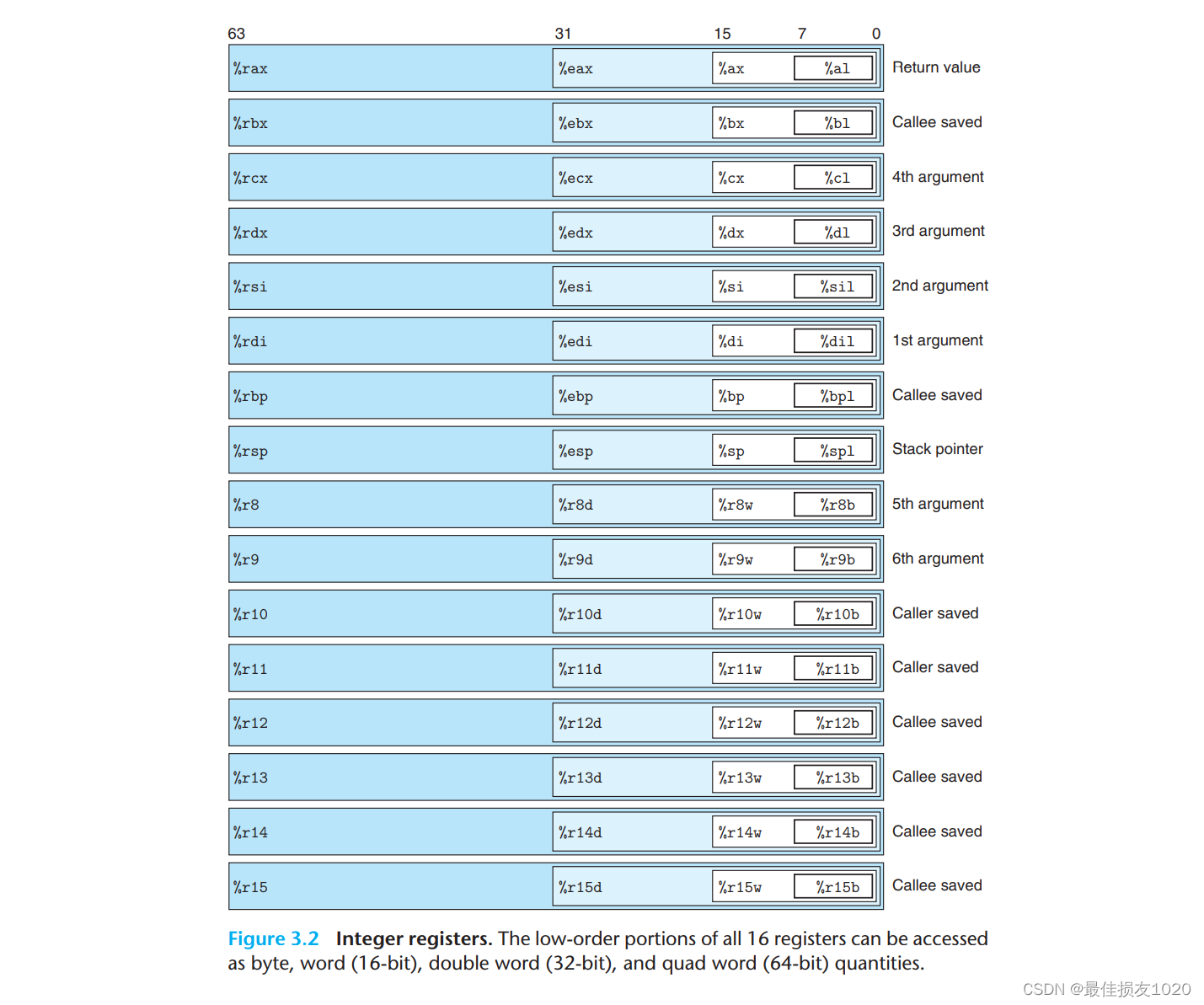第一章 C:穿越时空的迷雾
这也是为什么C++语言令人失望的原因:它对C语言中存在的一些最基本的问题没有什么改进,而它对C语言最重要的扩展(类)却是建立在脆弱的C类型模型上。
C–K&R C 与 ANSI C的区别 1.10 安静的改变——无符号整数与有符号比较
1 2 3 4 5 6 7 8 9 10 11 12 13 14 15 16 17 18 19 20 21 22 23 24 25 26 27 28 29 30 31 32 33 34 35 36 37 38 39 40 41 42 43 44 45 46 47 48 49 #include <stdio.h> #define len(array) (sizeof(array) / sizeof(array[0])) int main () {int test[] = {23 , 34 , 17 , 204 , 58 };int d = -1 , x;printf ("%d %ld\n" , d, len(test) - 2 );if (d <= len(test) - 2 ) {1 ];printf ("%d\n" , x);else {printf ("no assignment\n" );printf ("d:%u len(test) - 2:%lu\n" , d, len(test) - 2 );#include <stdio.h> int main () {unsigned int a = 1 ;int b = -1 ;if (a > b) {printf ("right answer\n" );else {printf ("wrong answer\n" );printf ("%d\n" , (int )a);printf ("%u %x\n" , (unsigned int )b, (unsigned int )b);unsigned int c = 0xffffffff ;printf ("%d\n" , (int )c);
无符号整数和有符号整数之间进行强制类型转换时,位模式不改变。
C++有符号与无符号之间的转换问题 对于无符号类型的建议:
第二章 这不是Bug,而是语言特性 2.2 多做之过
二:粉笔也成了可用的硬件
1 2 3 4 5 6 7 8 9 10 11 12 13 14 15 16 17 18 19 20 21 22 23 #include <stdio.h> #define len(array) (int)(sizeof(array) / sizeof(array[0])) int main () {char *test[] = {"123" "456" ,"789" , "000" };printf ("str len:%d\n" , len(test)); for (int i = 0 ; i < len(test); i++) {printf ("%s\n" , test[i]);
三:太多的缺省可见性
2.3 误做之过
一:骆驼峰上的重载
二有些运算符的优先级是错误的
1 2 3 4 5 6 7 8 表达式与其实际结果int * ap[] <==> int * (ap[])int *fp() <==> int * (fp())0 <==> val & (mask != 0 )4 +lsb <==> msb << (4 +lsb)1 ,2 <==> (i = 1 ),2
1 if (a==b & c==d) 等同于 if (a==b && c==d)
如果提升&的优先级,则以上代码便会出错
三:早期gets函数中的Bug导致了Internet蠕虫
gets实验 1 2 3 4 5 6 7 8 9 10 11 12 13 14 15 16 17 18 19 20 21 22 23 24 25 26 #include <stdio.h> #include <string.h> void print_content (const char *p, const char *info) {printf ("%s:" , info);for (int i = 0 ; i < 10 ; i++) {printf ("%c" , p[i]);printf ("\n" );int main () {char before[10 ];char buffer[10 ];char after[10 ];memset (before, 'a' , 30 );"before" );"buffer" );"after" ); "before" );"buffer" );"after" ); return 0 ;
1 2 3 4 5 6 7 8 9 10 11 12 13 14 15 16 17 18 19 20 21 22 23 24 25 26 27 28 function ‘main’:function ‘gets’; did you mean ‘fgets’? [-Wimplicit-function-declaration]in function `main': /root/tianchi/codebase/expr/expert/gets.c:18: warning: the `gets' function is dangerous and should not be used.main $1 = (char (*)[10]) 0x7fffffffde8a$2 = (char (*)[10]) 0x7fffffffde94$3 = (char (*)[10]) 0x7fffffffde9e
gets函数破坏了after数组的数据2.4 少做之过
1 2 3 4 5 6 7 8 9 10 11 12 13 14 15 16 17 18 19 20 21 22 23 24 1 :char * func1 () {char * p = malloc (100 );return p;void func2 () {char * q = func1();free (q)2 :void func1 (char * p) {void func2 () {char * q = malloc (10 );free (q);
五:lint程序决不应该被分离出来
先来说说什么是“静态程序分析(Static program analysis)”,静态程序分析是指使用自动化工具软件对程序源代码进行检查,以分析程序行为的技术,应用于程序的正确性检查、安全缺陷检测、程序优化等。它的特点就是不执行程序,相反,通过在真实或模拟环境中执行程序进行分析的方法称为“动态程序分析(Dynamic program analysis)”。
代码静态分析工具——splint的学习与使用 C语言标准——C89、C99、C11、C17、C2x …
对以上的gets程序进行分析
1 2 3 4 5 6 7 8 9 10 11 12 13 14 15 16 17 18 19 20 21 22 23 24 25 26 27 28 29 30 31 #include <stdio.h> #include <string.h> void print_content (const char *p, const char *info) {printf ("%s:" , info);for (int i = 0 ; i < 10 ; i++) {printf ("%c" , p[i]);printf ("\n" );int main () {char before[10 ];char buffer[10 ];char after[10 ];memset (before, 'a' , 30 );"before" );"buffer" );"after" );"before" );"buffer" );"after" );return 0 ;3.1 .2 --- 20 Feb 2018 5 :11 : Parse Error. (For help on parse errors, see splint -helpcontinue .
第一次运行直接解析错误,这个的原因在于在for循环语句中定义变量
在C语言中,局部变量应该在函数的可执行语句之前定义,但在C++中变量可在任何语句位置定义,只要允许程序语句的地方,都允许定义变量。
for语句中声明变量 c源代码检查工具splint使用问题及方案
1 2 3 4 5 6 7 8 9 10 11 12 13 14 15 16 17 18 19 20 21 22 23 24 25 26 27 28 3.1 .2 --- 20 Feb 2018 15 :18 : Function memset expects arg 2 to be int gets char : 'a' int . Use +charintliteral to allowchar constant is int .)17 :17 : Passed storage buffer not completely defined (*buffer is undefined) : print_content (buffer, ...) return value or global is not defined.(Use -compdef to inhibit warning) defined (*after is undefined) : print_content (after, ...) (Use -bufferoverflowhigh to inhibit warning) value (type char *) ignored: gets (buffer) to (void ) to eliminate message. (Use -retvalother to inhibit warning) static qualifier. (Use -exportlocal to inhibit warning)
Splint Manual
第三章 分析C语言的声明 在结构体中放置数组,而后可以将数组当作第一等级的类型,用赋值语句复制整个数组,以传值调用的方式把它传递到函数,或者把它作为函数的返回类型。
1 2 3 4 5 6 7 8 9 10 11 12 13 14 15 16 17 18 19 20 21 22 23 24 25 26 27 28 29 30 31 32 33 34 35 36 37 38 39 40 41 42 43 44 45 46 47 48 49 50 51 52 53 54 55 56 #include <stdio.h> #include <string.h> struct Test {int data[10 ];int main () {int a[10 ];int b[10 ];int c[10 ];for (int i = 0 ; i < 10 ; i++) {for (int i = 0 ; i < 10 ; i++) {memcpy (c, a, 10 * sizeof (int ));for (int i = 0 ; i < 10 ; i++) {printf ("a:%d b:%d c:%d\n" , a[i], b[i], c[i]);struct Test t1 , t2 , t3 ;for (int i = 0 ; i < 10 ; i++) {memcpy (&t3, &t1, sizeof (struct Test));for (int i = 0 ; i < 10 ; i++) {printf ("t1:%d t2:%d t3:%d\n" , t1.data[i], t2.data[i], t3.data[i]);
理解C语言声明的优先级规则 左边 紧邻的指针星号。
记住const表示只读,并不能因为它的意思是常量就认为它表示的就是常量。
const实验 1 2 3 4 5 6 7 8 9 10 11 12 13 14 15 16 17 18 19 20 21 22 23 24 25 26 27 28 29 30 31 32 #include <stdio.h> int main () {int a;const int b = 10 ;unsigned long long *p = (unsigned long long *)&a; printf ("addr \na:%p\nb:%p\n" , &a, &b); 0x1111222233334444 ; printf ("no const var value:%x\n" , a); printf ("const var value:%x\n" , b); 0x7fff69a8fff8 0x7fff69a8fffc const var value:33334444 const var value:11112222 const .c:8 1 at 0x11c0 : file const .c, line 8. const 0x7fffffffdee8 0x7fffffffdeec 1 , main () at const .c:8 8 printf ("no const var value:%x\n" , a);8 ab 0x7fffffffdee8 0x7fffffffdee8 : 0x44 0x44 0x33 0x33 0x22 0x22 0x11 0x11
typedef关键字并不创建一个变量,而是宣称“这个名字是指定类型的同义词”。 彻底的封装类型 ,而#define只是单纯的宏文本替换。
示例程序:
1 2 3 4 5 6 7 8 9 10 11 12 13 14 15 16 17 18 19 #include <stdio.h> typedef char *char_ptr;#define c_ptr char * int main () {char *t1, t2;printf ("t1:%ld t2:%ld\np1:%ld p2:%ld\nq1:%ld q2:%ld\n" , sizeof (t1), sizeof (t2), sizeof (p1), sizeof (p2), sizeof (q1), sizeof (q2));
不要为了方便起见而对结构体使用typedef。这样做的唯一好处是你不必书写struct关键字,但这个关键字可以向你提示一些信息,不应该把它省掉。
第四章 令人震惊的事实:数组和指针并不相同
数组的下标应该从0开始还是从1开始?我提议的妥协方案是0.5,可惜他们未予认真考虑便一口回绝。
定义与声明
定义
只能出现在一个地方
确定对象的类型并分配内存,用以创建新的对象。例如:int array[10];
声明
可以多次出现
描述对象的类型,用于指代其他地方定义的对象(例如在其他文件里)。例如:extern int array[]
指针与数组实验 先简单看一下以下c代码
1 2 3 4 5 6 7 8 9 10 11 12 13 #include <stdio.h> #include <stdlib.h> int main () {char array [10 ];array [0 ] = 0x56 ;array [1 ] = 0x78 ;array [9 ] = 0x12 ;char *p = (char *)malloc (10 );0 ] = 0x34 ;1 ] = 0x12 ;printf ("%p\n%p\n%p\n%p\n" , array , &array , p, &p);
生成目标文件并进行反汇编
1 2 3 gcc point.c -o point -g
截取主要汇编代码
1 2 3 4 5 6 7 8 9 10 11 12 13 14 15 16 17 18 19 20 21 22 23 24 25 26 27 28 29 30 31 32 33 34 35 36 37 38 39 40 41 42 43 44 45 46 47 48 49 50 51 0000000000001189 <main>:main $0x20 ,%rsp$0x56 ,-0x12(%rbp)$0x78 ,-0x11(%rbp)$0x12 ,-0x9(%rbp)$0xa ,%edi$0x34 ,(%rax)$0x1 ,%rax$0x12 ,(%rax)printf ("%p\n%p\n%p\n%p\n" , array, &array, p, &p);$0x0 ,%eaxprintf @plt>$0x0 ,%eax
fs:0x28与linux的堆栈保护机制有关,为简化问题,将该机制关掉。面试官不讲武德,居然让我讲讲蠕虫和金丝雀! Why does this memory address %fs:0x28 ( fs[0x28] ) have a random value?
1 2 3 4 5 6 7 8 9 10 11 12 13 14 15 16 17 18 19 20 21 22 23 24 25 26 27 28 29 30 31 32 33 34 35 36 37 38 39 40 41 42 43 44 45 46 main $0x20 ,%rsp $0x56 ,-0xa(%rbp) $0x78 ,-0x9(%rbp)$0x12 ,-0x1(%rbp)$0xa ,%edi $0x34 ,(%rax) $0x1 ,%rax $0x12 ,(%rax) printf ("%p\n%p\n%p\n%p\n" , array, &array, p, &p);$0x0 ,%eaxprintf @plt>$0x0 ,%eax
C++内存模型以及寄存器指针rsp和rbp
1 2 3 4 0x7ffd85499f96 0x7ffd85499f96 0x55e303c302a0 0x7ffd85499f88
使用gdb显示相关数据
1 2 3 4 5 6 7 8 9 10 11 12 13 14 15 16 17 18 19 20 21 22 23 24 25 26 27 28 29 30 31 32 33 34 35 36 37 38 39 40 41 42 43 44 45 46 47 48 49 50 51 52 53 54 55 56 printf ("%p\n%p\n%p\n%p\n" , array, &array, p, &p);$1 = (char (*)[10]) 0x7fffffffdef6$2 = (char **) 0x7fffffffdee8$3 = 0x5555555592a0 "4\022"
注意区分“地址y”和“地址y的内容”之间的区别
指针
数组
保存数据的地址
保存数据
间接访问数据,首先取得指针的内容,把它作为地址,然后从这个地址提取数据。
直接访问数据,a[i]只是简单地以a+i为地址取得数据
通常用于动态结果
通常用于存储固定数目且数据类型相同的元素
相关的函数为malloc,free
隐式分配和删除
通常指向匿名数据
自身即为变量名
第五章 对链接的思考
如果函数库的一份副本是可执行文件的物理组成部分,那么我们称之为静态链接;如果可执行文件只是包含了文件名,让载入器在运行时能够寻找程序所需要的函数库,那么我们称之为动态链接。收集模块准备执行的三个阶段的规范名称是链接编辑(link editing)、载入(loading)和运行时链接(runtime linking)。 静态链接的模块被链接编辑并载入以便运行。动态链接的模块被链接编辑后载入,并在运行时进行链接以便运行。程序执行时,在main函数被调用前,运行时载入器把共享的数据对象载入到进程的地址空间。外部函数被真正调用之前,运行时载入器并不解析它们。所以即使链接了函数库,如果并没有实际调用,也不会带来额外开销。
动态链接的主要目的就是把程序与它们使用的特定的函数库版本中分离开来。动态链接必须保证四个特定的函数库:libc(c运行时函数库),libsys(其他系统函数),libX(X windowing)和libnsl(网络服务)
简单静态库动态库实验 1 2 3 4 5 6 7 8 9 10 11 12 13 14 15 16 17 #include <stdio.h> int func (int a, int b) {printf ("%d %d\n" , a, b);return a + b;#include <stdio.h> int func (int a, int b) ; int main () {int c = func(1 , 2 );printf ("%d\n" , c);
1 2 3 4 5 6 7 8 9 10 11 12 13 14 15 16 17 18 19 20 21 22 23 24 25 26 27 28 29 30 31 32 33 34 35 36 37 38 39 40 41 42 43 44 45 46 47 48 49 50 51 52 53 54 55 56 57 58 59 60 61 62 63 64 65 66 67 68 69 70 71 72 73 74 75 76 77 78 79 80 81 82 83 84 85 86 87 88 89 90 91 92 93 94 95 96 97 98 99 100 101 102 103 104 105 106 107 108 109 110 111 112 113 114 115 116 117 118 119 120 121 122 gcc func.c -c in function `main': test.c:(.text+0x17): undefined reference to `func' exit statuswhile loading shared libraries: libfunc.so: cannot open shared object file: No such file or directoryprintf @@GLIBC_2.2.5printf @@GLIBC_2.2.5
5.3 函数库链接的5个特殊秘密
动态库文件的扩展名是.so,而静态库文件的扩展名是.a
通过-lthread选项,告诉编译链接到libthread.so
编译器期望在确定目录下找到库
编译目标代码时指定的动态库搜索路径;
环境变量 LD_LIBRARY_PATH 指定的动态库搜索路径;
配置文件 /etc/ld.so.conf 中指定的动态库搜索路径;
默认的动态库搜索路径 /lib ;
默认的动态库搜索路径 /usr/lib
观察头文件,确认所使用的函数库1 2 3 4 5 6 7 8 9 10 #include 文件名 库路径名 所用的编译器选项 string .h> <time.h> ---> libc.so
与提取动态库中的符号相比,静态库中的符号提取的方法限制更严
简而言之,在编译器命令行中各个静态链接库出现的顺序是非常重要的。为了能从静态链接库中提取所需的符号,首先需要让文件包含未解析的引用。始终应该将-l函数库选项/静态库/动态库 放在编译命令行的最右边。
参考:gcc 指定运行时动态库路径 nm命令详解](https://www.cnblogs.com/zuofaqi/p/12026482.html)
5.4 警惕interpositioning 准则:不要让程序中任何符号成为全局的,除非有意把它们作为程序的接口之一
第六章 运动的诗章:运行时数据结构
编程语言理论的经典对立之一就是代码和数据的区别,有些语言(lisp)把两者视为一体。其他语言(如C语言)通常维持两者的区别。Internet蠕虫之所以难以理解,是因为它的攻击方法的原理是把数据转换为代码。代码和数据的区别也可以认为是编译时和运行时的分界线。编译器的绝大部分工作与翻译代码有关;必要的数据存储管理的绝大部分在运行时进行。
a.out: assembler output
1 #define FS_MAGIC 0x011954
在SVr4中,可执行文件用文件的第一个字节来标注,文件以十六进制7F打头,紧跟在后面的第二至第四个字节为ELF。
1 2 3 4 5 6 7 8 9 10 11 12 #include <stdio.h> #include <stdlib.h> char pear[40 ];static double peach;int mango = 13 ;static long melo = 2001 ;int main () {int i = 3 , j, *ip;malloc (sizeof (i));5 ] = i;2.0 * mango;
1 2 3 4 5 6 7 8 9 10 11 12 13 14 15 16 17 18 19 20 21 22 23 24 25 26 27 28 29 30 31 32 33 34 35 36 37 38 39 gcc seg.c -g for GNU/Linux 3.2.0, with debug_info, not strippedmain $0x10 ,%rsp $0x3 ,-0xc(%rbp) $0x4 ,%edi $0x0 ,%eax
第0页未映射,故访问空指针就会引发段错误。
用grep来调试操作系统是一个非同寻常的概念。有时候甚至连源代码工具都可以帮忙解决运行时问题!
第七章 对内存的思考
如果它存在,而且你能看见它——它是真实的(real)
进程只能操作位于物理内存中的页面。当进程引用一个不在物理内存中的页面上时,内存管理单元(MMU)就会产生一个页错误。内核对此事件作出响应,并判断该引用是否有效。如果无效,那么内核向进程发出一个segmentation violation(段违规)的信号。如果有效,内核从磁盘取回该页,换入到内存中。一旦页面进入内存,进程便被解锁,可以重新运行——进程本身不知道它曾经因为页面换入事件等待了一会。
堆经常会出现两种类型的问题:
总线错误与段错误
core dump来源于很早的过去,那时所有的内存都是由铁氧化物圆环(也就是core,磁心)制造的。半导体作为内存的主要制造材料的时间已经超过15年,但core这个词仍然被用作“内存”的同义词。
1 2 3 4 5 6 7 8 9 10 11 12 13 14 15 16 17 18 19 20 21 22 23 24 25 26 27 28 29 #include <stdio.h> int main () {union bus {char a[10 ];int i;int *p = (int *)&(u.a[1 ]);0x12345678 ;for (int i = 0 ; i < 10 ; i++) {printf ("%llx %x\n" , &(u.a[i]), u.a[i] & 0xff );unsigned long long addr = (unsigned long long )&(u.a[1 ]);printf ("addr:%lld remainder:%lld\n" , addr, addr - addr / 4 * 4 );
在x86的机器上运行,并不会发生书中所说的总线错误问题,参考《c专家编程》笔记–bus error(总线错误) 加入汇编代码打开对齐检查功能。
1 2 3 4 5 6 7 8 9 10 11 12 13 14 15 16 17 18 19 20 #include <stdio.h> int main () {"pushf\norl $0x40000,(%rsp)\npopf" );union bus {char a[10 ];int i;int *p = (int *)&(u.a[1 ]);0x12345678 ;for (int i = 0 ; i < 10 ; i++) {printf ("%llx %x\n" , &(u.a[i]), u.a[i] & 0xff );unsigned long long addr = (unsigned long long )&(u.a[1 ]);printf ("addr:%lld remainder:%lld\n" , addr, addr - addr / 4 * 4 );
x86都支持地址非对齐访问,arm部分支持非对齐访问,有些则可能会触发HardFault exception,即死机;为代码移植性考虑,建议内存访问数据时对齐访问(不用#pragma pack)内存访问为什么需要地址对齐
段错误
1 2 3 4 5 6 7 8 9 10 11 12 13 14 15 16 17 18 19 20 21 22 23 24 25 26 27 28 29 30 31 32 33 34 35 36 37 38 39 #include <stdio.h> int main () {int *p = (int *)0x12345678 ;1 ;#include <stdio.h> int main () {int *p = (int *)0x0 ;1 ;int main () {int *p = malloc (16 );printf ("addr:0x%p\n" , p);free (p);printf ("addr:0x%p\n" , p);0 ;0x0 x55f41bfc22a00x0 x55f41bfc22a0#include <stdio.h> #include <stdlib.h> int main () {int *p = malloc (16 );printf ("addr:0x%p\n" , p);free (p);printf ("addr:0x%p\n" , p);free (p);0 ;0x0 x563b2b7852a00x0 x563b2b7852a0free () : double free detected in tcache 2SIGABRT (Abort)
悬挂指针实验 1 2 3 4 5 6 7 8 9 10 11 12 13 14 15 16 17 #include <stdio.h> int *func () {int array [10 ] = {1 , 2 , 3 , 4 };return array ;int main () {int *p = func();printf ("val:%d %d %d %d\n" , p[0 ], p[1 ], p[2 ], p[3 ]);5 :10 : warning: function returns address of local variable [-Wreturn-local-addr]5 | return array ;SIGSEGV (Address boundary error)
1 2 3 4 5 6 7 8 9 10 11 12 13 14 15 16 17 18 #include <stdio.h> int *func () {int array [10 ] = {1 , 2 , 3 , 4 };printf ("addr:0x%p" , array );return array ;int main () {int *p = func();printf ("addr:0x%p" , p);printf ("val:%d %d %d %d\n" , p[0 ], p[1 ], p[2 ], p[3 ]);SIGSEGV (Address boundary error)
1 2 3 4 5 6 7 8 9 10 11 12 13 14 15 16 17 18 #include <stdio.h> int *func () {int array [10 ] = {1 , 2 , 3 , 4 };printf ("addr:0x%p\n" , array );return array ;int main () {int *p = func();printf ("addr:0x%p\n" , p);printf ("val:%d %d %d %d\n" , p[0 ], p[1 ], p[2 ], p[3 ]);0x0 x7ffeff3f5a000 x(nil)SIGSEGV (Address boundary error)
1 2 3 4 5 6 7 8 9 10 11 12 13 14 15 16 17 18 19 20 21 22 23 24 25 26 27 28 29 30 31 32 33 34 35 36 37 38 39 40 41 42 43 44 45 46 47 48 49 50 51 52 53 54 55 56 57 58 59 60 61 62 63 64 65 66 67 68 69 70 71 72 73 74 75 76 stack -protector0000000000001149 <func>:#include <stdio.h> int *func () {1149 : f3 0f 1 e fa endbr64 114 d: 55 push %rbp114 e: 48 89 e5 mov %rsp,%rbp1151 : 48 83 ec 30 sub $0x30 ,%rspint array [10 ] = {1 , 2 , 3 , 4 };1155 : 48 c7 45 d0 00 00 00 movq $0x0 ,-0x30 (%rbp) # movq 传送四字 115 c: 00 115 d: 48 c7 45 d8 00 00 00 movq $0x0 ,-0x28 (%rbp)1164 : 00 1165 : 48 c7 45 e0 00 00 00 movq $0x0 ,-0x20 (%rbp)116 c: 00 116 d: 48 c7 45 e8 00 00 00 movq $0x0 ,-0x18 (%rbp)1174 : 00 1175 : 48 c7 45 f0 00 00 00 movq $0x0 ,-0x10 (%rbp)117 c: 00 117 d: c7 45 d0 01 00 00 00 movl $0x1 ,-0x30 (%rbp) # movl 传送双字 1184 : c7 45 d4 02 00 00 00 movl $0x2 ,-0x2c (%rbp)118b : c7 45 d8 03 00 00 00 movl $0x3 ,-0x28 (%rbp)1192 : c7 45 dc 04 00 00 00 movl $0x4 ,-0x24 (%rbp)printf ("addr:0x%p\n" , array );1199 : 48 8 d 45 d0 lea -0x30 (%rbp),%rax # 传送地址119 d: 48 89 c6 mov %rax,%rsi11 a0: 48 8 d 3 d 5 d 0 e 00 00 lea 0xe5d (%rip),%rdi # 2004 <_IO_stdin_used+0x4 >11 a7: b8 00 00 00 00 mov $0x0 ,%eax11 ac: e8 9f fe ff ff callq 1050 <printf @plt>return array ;11b 1: b8 00 00 00 00 mov $0x0 ,%eax # 返回值为0 11b 6: c9 leaveq 11b 7: c3 retq 00000000000011b 8 <main>:int main () {11b 8: f3 0f 1 e fa endbr64 11b c: 55 push %rbp11b d: 48 89 e5 mov %rsp,%rbp11 c0: 48 83 ec 10 sub $0x10 ,%rspint *p = func();11 c4: b8 00 00 00 00 mov $0x0 ,%eax11 c9: e8 7b ff ff ff callq 1149 <func>11 ce: 48 89 45 f8 mov %rax,-0x8 (%rbp) # 返回值写入栈中(指针变量)printf ("addr:0x%p\n" , p);11 d2: 48 8b 45 f8 mov -0x8 (%rbp),%rax11 d6: 48 89 c6 mov %rax,%rsi11 d9: 48 8 d 3 d 24 0 e 00 00 lea 0xe24 (%rip),%rdi # 2004 <_IO_stdin_used+0x4 >11e0 : b8 00 00 00 00 mov $0x0 ,%eax11e5 : e8 66 fe ff ff callq 1050 <printf @plt>printf ("val:%d %d %d %d\n" , p[0 ], p[1 ], p[2 ], p[3 ]);11 ea: 48 8b 45 f8 mov -0x8 (%rbp),%rax11 ee: 48 83 c0 0 c add $0xc ,%rax11f 2: 8b 30 mov (%rax),%esi11f 4: 48 8b 45 f8 mov -0x8 (%rbp),%rax11f 8: 48 83 c0 08 add $0x8 ,%rax11f c: 8b 08 mov (%rax),%ecx11f e: 48 8b 45 f8 mov -0x8 (%rbp),%rax1202 : 48 83 c0 04 add $0x4 ,%rax1206 : 8b 10 mov (%rax),%edx1208 : 48 8b 45 f8 mov -0x8 (%rbp),%rax120 c: 8b 00 mov (%rax),%eax120 e: 41 89 f0 mov %esi,%r8d1211 : 89 c6 mov %eax,%esi1213 : 48 8 d 3 d f5 0 d 00 00 lea 0xdf5 (%rip),%rdi # 200f <_IO_stdin_used+0xf >121 a: b8 00 00 00 00 mov $0x0 ,%eax121f : e8 2 c fe ff ff callq 1050 <printf @plt>1224 : b8 00 00 00 00 mov $0x0 ,%eax1229 : c9 leaveq 122 a: c3 retq 122b : 0f 1f 44 00 00 nopl 0x0 (%rax,%rax,1 )
1 2 3 4 5 6 7 8 9 10 11 12 13 14 15 16 17 18 19 20 #include <stdio.h> int *func () {int a = 1 ;int *p = &a;printf ("addr:0x%p\n" , p);return p;int main () {int *p = func();printf ("addr:0x%p\n" , p);0x12345678 ;printf ("val:%x\n" , *p);0x0 x7ffcf5a7e3c40x0 x7ffcf5a7e3c412345678
1 2 3 4 5 6 7 8 9 10 11 12 13 14 15 16 17 18 19 20 21 22 23 24 25 26 27 28 29 30 31 32 33 34 35 36 37 38 39 40 41 42 43 44 45 46 47 48 49 50 51 52 53 54 55 56 0000000000001149 <func>:#include <stdio.h> int *func () {1149 : f3 0f 1 e fa endbr64 114 d: 55 push %rbp114 e: 48 89 e5 mov %rsp,%rbp1151 : 48 83 ec 10 sub $0x10 ,%rspint a = 1 ;1155 : c7 45 f4 01 00 00 00 movl $0x1 ,-0xc (%rbp)int *p = &a;115 c: 48 8 d 45 f4 lea -0xc (%rbp),%rax1160 : 48 89 45 f8 mov %rax,-0x8 (%rbp) # 将变量a地址写入p中printf ("addr:0x%p\n" , p);1164 : 48 8b 45 f8 mov -0x8 (%rbp),%rax1168 : 48 89 c6 mov %rax,%rsi116b : 48 8 d 3 d 92 0 e 00 00 lea 0xe92 (%rip),%rdi # 2004 <_IO_stdin_used+0x4 >1172 : b8 00 00 00 00 mov $0x0 ,%eax1177 : e8 d4 fe ff ff callq 1050 <printf @plt>return p;117 c: 48 8b 45 f8 mov -0x8 (%rbp),%rax # 返回指针地址1180 : c9 leaveq 1181 : c3 retq 0000000000001182 <main>:int main () {1182 : f3 0f 1 e fa endbr64 1186 : 55 push %rbp1187 : 48 89 e5 mov %rsp,%rbp118 a: 48 83 ec 10 sub $0x10 ,%rspint *p = func();118 e: b8 00 00 00 00 mov $0x0 ,%eax1193 : e8 b1 ff ff ff callq 1149 <func>1198 : 48 89 45 f8 mov %rax,-0x8 (%rbp)printf ("addr:0x%p\n" , p);119 c: 48 8b 45 f8 mov -0x8 (%rbp),%rax11 a0: 48 89 c6 mov %rax,%rsi11 a3: 48 8 d 3 d 5 a 0 e 00 00 lea 0xe5a (%rip),%rdi # 2004 <_IO_stdin_used+0x4 >11 aa: b8 00 00 00 00 mov $0x0 ,%eax11 af: e8 9 c fe ff ff callq 1050 <printf @plt>0x12345678 ;11b 4: 48 8b 45 f8 mov -0x8 (%rbp),%rax11b 8: c7 00 78 56 34 12 movl $0x12345678 ,(%rax)printf ("val:%x\n" , *p);11b e: 48 8b 45 f8 mov -0x8 (%rbp),%rax11 c2: 8b 00 mov (%rax),%eax11 c4: 89 c6 mov %eax,%esi11 c6: 48 8 d 3 d 42 0 e 00 00 lea 0xe42 (%rip),%rdi # 200f <_IO_stdin_used+0xf >11 cd: b8 00 00 00 00 mov $0x0 ,%eax11 d2: e8 79 fe ff ff callq 1050 <printf @plt>11 d7: b8 00 00 00 00 mov $0x0 ,%eax11 dc: c9 leaveq 11 dd: c3 retq 11 de: 66 90 xchg %ax,%ax
基本的观察结果为:返回数组地址,编译器直接返回0,一定报错,返回指针地址,编译器返回原值,不会报错。编译器这样干或许是因为返回局部数组的地址是一定错的,指针有可能指向动态分配的内存,有可能是对的。不过返回执行局部变量的指针危害更大。
第八章 为什么程序员无法分清万圣节和圣诞节 在表达式中,char转换为int,float转换为double。由于函数参数也是一个表达式,在参数传递时也会发生类型转换。
1 2 3 4 5 6 7 8 9 #include <stdio.h> int main () { printf ("char const:%d\n" , sizeof ('a' )); }char 位段 枚举 unsigned char short unsigned short int float double
每次在使用系统调用之后,检查一下全局变量errno是一种好的做法,errno隶属于ANSI C标准。当确有错误发生时,库函数perror可以打印错误信息。
debugging hook
1 2 3 4 5 6 7 8 9 10 11 12 13 14 15 16 17 18 #include <stdio.h> void func () { printf ("call function\n" ); }int add (int a, int b) { return a + b; }int main () { printf ("test\n" ); }1 , main () at hook.c:5 5 int main () { printf ("test\n" ); }func () function (gdb) p func () void add (1 ,2 ) 3 add (1 ,2 ) 3
可调试性编码意味着把系统分成几个部分,先让程序总体结构运行。只有基本的程序能够运行之后,你才为那些复杂的细节完善,性能调整和算法优化进行编码。
1 2 3 int hash_filename (char * s) {return 0 ;
有时候,花点时间把编程问题分解为几个部分往往是解决它的最快方法。
第九章 再论数组 软件信条
什么时候数组和指针是相同的
另一种表述为:
“表达式中的数组名”就是指针
C语言把数组下标作为指针的偏移量
“作为函数参数的数组名”等于指针
C语言把数组下标改写成指针偏移量的根本原因是指针和偏移量是底层硬件所使用的基本模型。
1 2 3 4 5 6 7 8 9 10 11 12 13 14 15 16 17 18 19 20 21 22 23 24 #include <stdio.h> int main () {int a[10 ], *p; int i = 0 ;for (i = 0 ; i < 10 ; i++) {0 ;for (i = 0 ; i < 10 ; i++) {0 ;for (i = 0 ; i < 10 ; i++) {0 ;for (i = 0 ; i < 10 ; i++) {0 ;
进行反汇编:
1 2 3 4 5 6 7 8 9 10 11 12 13 14 15 16 17 18 19 20 21 22 23 24 25 26 27 28 29 30 31 32 33 34 35 36 37 38 39 40 41 42 43 44 45 46 47 48 49 50 51 52 53 54 55 56 57 58 59 60 61 62 63 64 65 66 67 68 69 70 71 72 73 74 75 76 77 78 79 80 81 82 83 84 85 86 87 88 89 90 91 92 93 94 95 96 97 98 99 100 101 102 103 104 105 106 107 108 109 110 0000000000001129 <main>:main $0x0 ,-0xc(%rbp) for (i = 0; i < 10; i++) {$0x0 ,-0xc(%rbp)$0x0 ,-0x40(%rbp,%rax,4) for (i = 0; i < 10; i++) {$0x1 ,-0xc(%rbp) $0x9 ,-0xc(%rbp) for (i = 0; i < 10; i++) {$0x0 ,-0xc(%rbp)$0x0 ,(%rax) for (i = 0; i < 10; i++) {$0x1 ,-0xc(%rbp)$0x9 ,-0xc(%rbp)for (i = 0; i < 10; i++) {$0x0 ,-0xc(%rbp)$0x0 ,(%rax)for (i = 0; i < 10; i++) {$0x1 ,-0xc(%rbp)$0x9 ,-0xc(%rbp)for (i = 0; i < 10; i++) {$0x0 ,-0xc(%rbp)$0x0 ,(%rax) for (i = 0; i < 10; i++) {$0x1 ,-0xc(%rbp)$0x9 ,-0xc(%rbp)$0x0 ,%eax$0x0 ,-0x40(%rbp,%rax,4) $0x0 ,(%rax) $0x0 ,(%rax)$0x0 ,(%rax)
好像4种方法的效果并不是完全一样,①>④>②=③
不过如果变量定义在main函数之外,情况就不一样了
1 2 3 4 5 6 7 8 9 10 11 12 13 14 15 16 17 18 19 20 21 22 #include <stdio.h> int a[10 ], *p; int main () {int i = 0 ;for (i = 0 ; i < 10 ; i++) {0 ;for (i = 0 ; i < 10 ; i++) {0 ;for (i = 0 ; i < 10 ; i++) {0 ;for (i = 0 ; i < 10 ; i++) {0 ;
1 2 3 4 5 6 7 8 9 10 11 12 13 14 15 16 17 18 19 20 21 22 23 24 25 26 27 a[i] = 0;fc mov -0x4(%rbp),%eax $0x0 ,(%rdx,%rax,1) fc mov -0x4(%rbp),%edx $0x2 ,%rdx $0x0 ,(%rax) fc mov -0x4(%rbp),%edx$0x2 ,%rdx$0x0 ,(%rax)$0x0 ,(%rax)
此时各个方式的效果就类似了。
聊一聊基础的CPU寄存器~
第十章: 再论指针 我认为本章只需要快速浏览一编即可,指针数组,数组指针之类的东西会让第九章本来比较清晰的概念再次混淆,反正多维数组本就不怎么常用,与其认真研究这章,不如回过头再看几遍第四章与第九章。
第十一章:你懂得C,所以C++不在话下 构造函数与析构函数违反了C语言中“一切工作自己负责”的原则。它们可以使大量的工作在程序运行时被隐式地完成,减轻了程序员的负担。这也违背了C语言的哲学,即语言中的任何部分都不应该通过隐藏的运行时程序来实现。
C语言很容易让你在开枪时伤着自己的脚,C++使这种情况很少发生。但是,一旦发生这种情况,它很可能轰掉你整条腿。
1 2 3 4 5 6 7 8 9 10 11 12 13 14 15 16 17 18 19 20 21 22 23 24 25 26 27 28 29 30 31 32 33 34 35 class Base {public :virtual void PrintMsg () "Base class msg" << std::endl; }class Derive : public Base {public :void PrintMsg () "Derive class msg" << std::endl; }int main () PrintMsg ();PrintMsg ();PrintMsg ();PrintMsg ();PrintMsg ();
c++ 多态相关的virtual关键词:
new和delete操作符:用于取代malloc和free函数。这两个操作符用起来方便一些(如能够自动完成sizeof的计算工作),并自动调用合适的构造函数和析构函数)。new能够真正地建立一个对象,malloc则只是分配内存。
编程语言的主要目标是提供一个框架,用计算机能够处理的方式表达问题的解决方法。编程语言越是能够体现这个原则,就越成功。C语言向系统程序员提供了许多由硬件直接支持的操作,它并不使用许多的抽象层来挡路。
C++对C语言的改进:
在C语言中,初始化一个字符数组的方式很容易产生这样一个错误,即数组很可能没有足够的空间存放结尾的NULL字符。C++对此作了一些改进,像char b[3]=”Bob”这样的表达式被认为是一个错误,但它在C语言中却是合法的。
C++允许一个常量整数来定义数组的大小,但C语言中不允许字符串结尾
1 2 3 4 5 6 7 8 9 10 11 12 13 14 15 #include <stdio.h> #include <string.h> int main () {char test[] = "1234" ;printf ("strlen: %ld sizeof:%ld\n" , strlen (test), sizeof (test));for (int i = 0 ; i < 5 ; i++) {printf ("%x " , test[i] & 0xff );
C语言初始化错误示例
1 2 3 4 5 6 7 8 9 10 11 12 13 14 15 16 17 18 19 20 21 #include <stdio.h> #include <string.h> int main () {char test[4 ] = "1234" ; char after[] = "5678" ; printf ("strlen: %ld sizeof:%ld\n" , strlen (test), sizeof (test));for (int i = 0 ; i < strlen (test); i++) {printf ("%c " , test[i]);int main () ’:string for array of chars is too long [-fpermissive]char test[4] = "1234" ;
C
C++
常量定义
1 2 3 4 5 6 7 8 9 10 11 12 13 14 15 16 17 18 19 20 21 22 23 24 25 26 27 28 29 #include <stdio.h> void func () {const int TEST_SIZE = 10 ;int test_data[TEST_SIZE]; for (int i = 0 ; i < TEST_SIZE; i++) {10 ;for (int i = 0 ; i < TEST_SIZE; i++) {printf ("%d " , test_data[i]);int main () {const int SIZE = 10 ;int data[SIZE]; for (int i = 0 ; i < SIZE; i++) {for (int i = 0 ; i < SIZE; i++) {printf ("%d " , data[i]);printf ("\n" );
1 2 3 4 5 6 7 8 9 10 11 12 13 14 15 16 17 18 19 20 21 22 23 24 25 26 27 28 29 30 31 32 33 34 35 36 37 #include <stdio.h> const int SIZE = 10 ;int data[SIZE];int main () {for (int i = 0 ; i < SIZE; i++) {for (int i = 0 ; i < SIZE; i++) {printf ("%d " , data[i]);#include <stdio.h> #define SIZE (10) int data[SIZE];int main () {for (int i = 0 ; i < SIZE; i++) {for (int i = 0 ; i < SIZE; i++) {printf ("%d " , data[i]);
c++语言
1 2 3 4 5 6 7 8 9 10 11 12 13 14 15 16 17 18 19 20 21 22 23 24 25 #include <stdio.h> const int SIZE = 10 ;int data[SIZE];int main () for (int i = 0 ; i < SIZE; i++) {for (int i = 0 ; i < SIZE; i++) {printf ("%d " , data[i]);4 :5 : error: variably modified ‘data’ at file scope4 | int data[SIZE];0 1 2 3 4 5 6 7 8 9 ⏎
C语言编译错误:Variably modified array at file scope gcc 自动识别的文件扩展名,gcc/g++ -x 选项指定语言,不同 gcc 版本 -std 编译选项支持列表
据说当你两眼深深的凝视深渊时,深渊也同样凝视着你。但是,如果你深深凝视本书,显然并不十分优雅,另外你很可能患有头痛或其他疾患。
《C专家编程》尾页
